What can you plant under the beautiful fir tree in your backyard? Not much seems to want to grow there, but the carpet of needles that would look natural in a forest appears sadly bare in your garden. To get started beautifying the area around your fir tree, first learn about the tree itself. Then explore some tips and ideas on landscaping under fir trees, as well as a list of plants that grow well under fir trees.
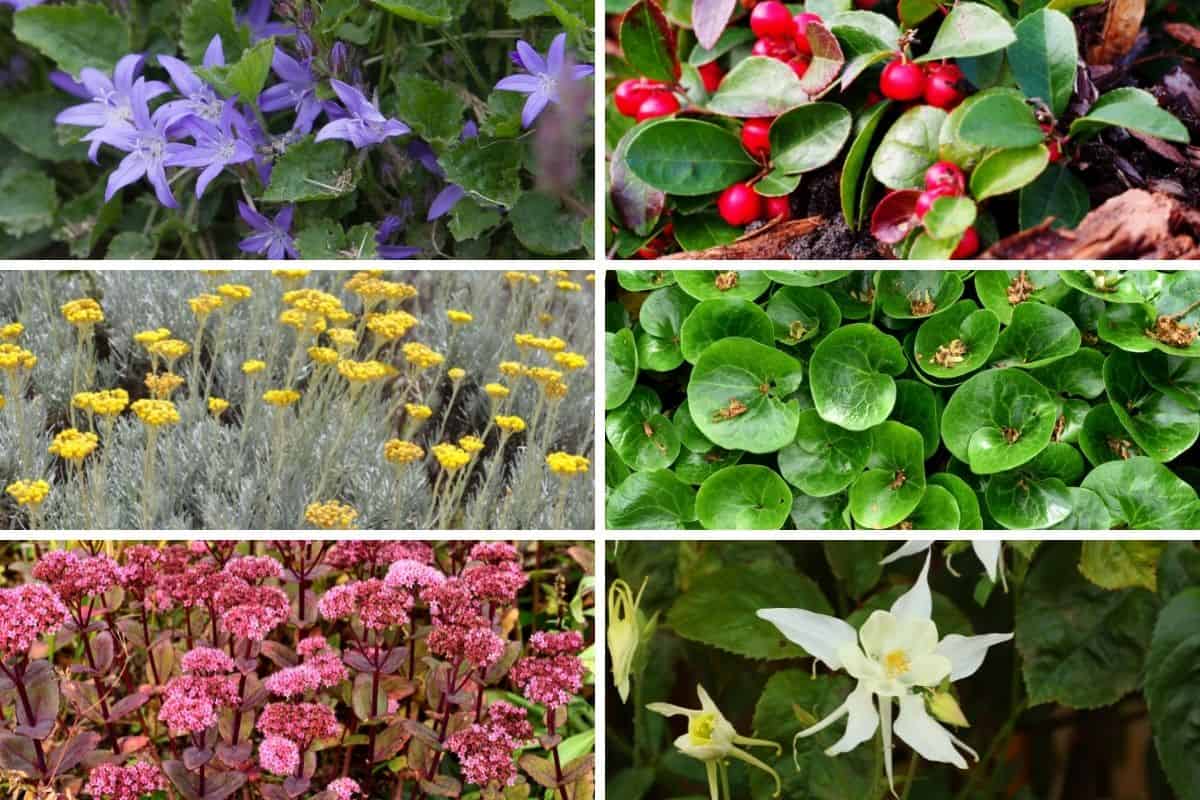
Landscaping Under Fir Trees
First, know your tree
More than 40 species belong to the genus Abies, known as true firs. Several other conifers also have fir in their name, though they belong to different genera. These include the Douglas fir (Pseudotsuga menziesii), Chinese fir (Cunninghamia lanceolata), and joint fir (Ephedra spp.).
Since these trees share similar characteristics, the tips and ideas laid out below will apply to all, though the physical description in this section will, for simplicity’s sake, refer only to true firs.
The leaves, or needles, of a true fir tree, attach individually to the branches with a base shaped like a suction cup so that when they fall off, they leave behind a circular scar. The cones perch upright on the upper branches, giving them the appearance of small owls. Rather than falling intact, when the cones mature in late autumn, their scales tumble off and the cones come apart.
Why nothing grows under fir trees
The needles of fir trees – and of all trees in the Pinaceae family – are acidic, and when they fall to the ground and begin to decompose, they also acidify the soil. In contrast, most garden plants prefer soil with a neutral pH, which means many of them may struggle to survive under a fir tree.
The many, overlapping branches of fir trees cast dense shade on the ground directly underneath, further hindering the growth of plants that require more than a minimum amount of sunlight. Some plants do thrive in full shade, but you will have to find those that also tolerate acidic soil.
Finally, large trees require large amounts of water, and the surface roots of fir trees quickly suck much of the moisture out of the surrounding soil, leaving little for nearby plants. Plus, these roots also take up a lot of space. So now we have what is called dry shade, a challenging condition on its own, coupled with shallow, acidic soil. But before you throw down your gardening gloves in despair, read on to learn how to landscape in these challenging conditions: it’s not impossible after all!
Landscaping tips and ideas around fir trees
1. Mind the roots
One of the most important things to keep in mind when landscaping under any tree is the root system. In beautifying the space around it, you don’t want to harm the tree itself.
If possible, avoid planting within five to six feet of the trunk. This is where the roots are the most vulnerable; plus, it’s the area that receives the least amount of sunlight. The farther out from the trunk you plant, the less harm will come to the roots (and the more sunlight and moisture the plants will receive).
When you do dig, take care not to damage any of the roots. You may be able to identify where some of the largest roots are and aim to plant between them. Additionally, choose plants in the smallest nursery pots possible to minimize the size of the holes you will need to dig.
2. Add compost and mulch
As you plant, add a bit of compost to each hole to give the plants a little boost. If soil is extremely limited under your fir tree, you can add a thin layer of soil all around. Keep it to just a couple inches to avoid smothering the tree roots, and leave a small gap around the trunk.
Adding a layer of organic mulch will help with moisture retention as well as protect the tree roots. Spread mulch only about two inches thick, and as with any soil additions, keep it from touching the trunk of the tree.
3. Arrange containers and decorative items
Container plantings offer a great way to fill in areas with particularly dense tree roots or the bare spaces nearest the trunk. Plus, these pots can be filled with plants that require a higher pH or more moisture. Pack them with colorful annuals to brighten up the space. Just remember to use smaller and/or lightweight containers and lightweight soil so as not to compact the soil underneath.
Similarly, decorative items can also lend a fuller look to the space under a fir tree. The area right around the trunk is a great place to display a shell collection, decorative stones, statuettes, or even a toad house or little fairy door.
4. Choose the right plants
Of course, nothing will grow if you don’t choose the right plants for the growing conditions. Look for those that tolerate or even thrive in full shade, acidic soil, and drought. Native plants that fit this description will work best, having already adapted to other local growing conditions as well.
Choose perennials or self-sowing annuals to avoid digging under the fir tree every year and thus disturbing the roots unnecessarily.
Ground covers planted well away from the trunk may begin to fill in that empty space as they spread, without you having to dig too close to the tree. Larger shrubs, which may not fit under the branches of the tree, can be planted nearby instead.
Plants That Grow Well Under Fir Trees
Herbaceous perennials
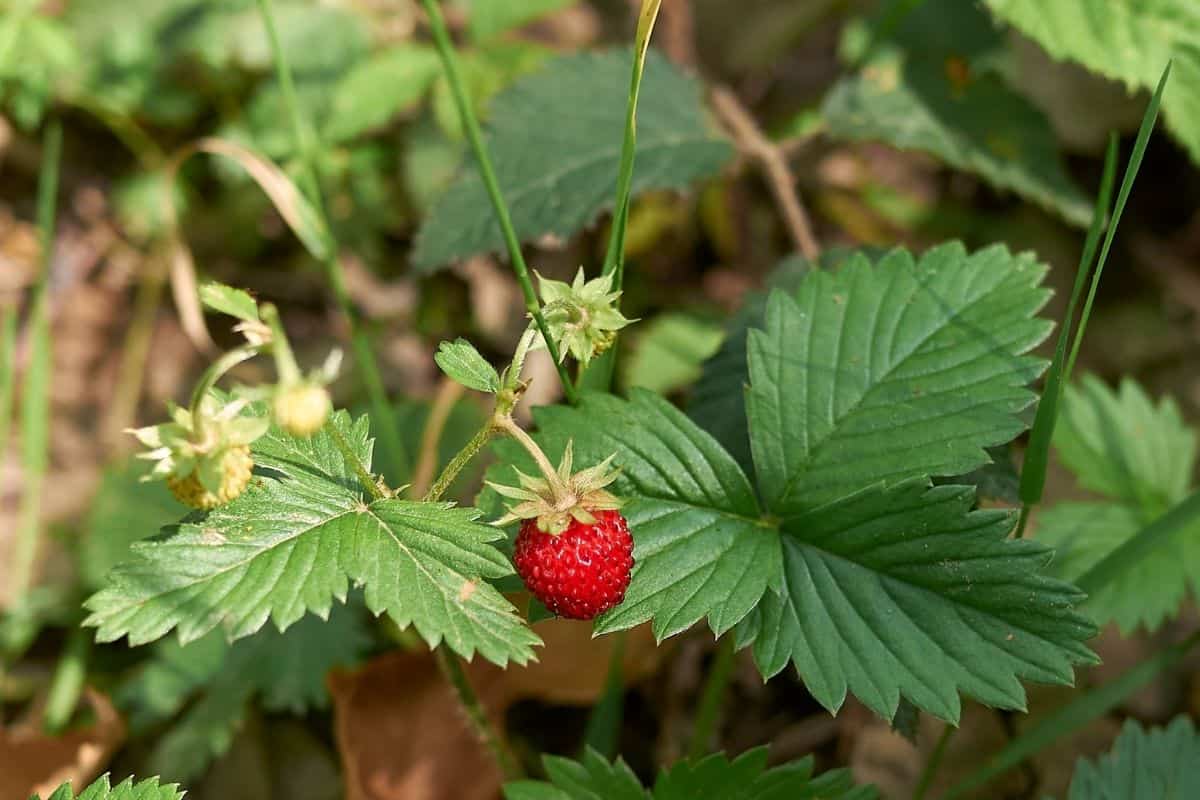
Wood spurge (Euphorbia amygdaloides var. robbiae) – spreading evergreen groundcover with rosettes of shiny, leathery leaves topped by rounded sprays of yellow to lime-green flowers
Bluebells (Campanula rotundifolia) – short-lived but self-sowing perennial with nodding, bell-shaped, purple flowers held singly or clustered on erect stems
Wild strawberry (Fragaria vesca) – excellent groundcover bearing small white flowers with yellow centers and tiny, crimson strawberries amid mounds of bright green, pleated leaves
Bearberry (Arctostaphylos uva-ursi) – spreading evergreen groundcover with leathery foliage that becomes red in winter and small white or pink blooms followed by bright red berries
Dusty miller (Jacobaea maritima) – bushy perennial known for its finely textured, silvery leaves densely covered in fine hairs
Wild stonecrop (Sedum ternatum) – mat-forming succulent with rounded, light-green leaves arranged in whorls of three and clusters of tiny white flowers in spring and early summer
Dusky cranesbill (Geranium phaeum var. ‘Samobol’) – tough, hardy, upright perennial with elegant maroon flowers floating above attractive green and chocolate foliage
Wintergreen (Gaultheria procumbens) – low-growing groundcover with leathery evergreen foliage and white or pink flowers followed by scarlet berries
Wild ginger (Asarum canadense) – creeping groundcover with fuzzy, heart-shaped foliage and purple-brown cupped flowers
Wild columbine (Aquilegia canadensis) – nodding red and yellow woodland flowers above mounds of rounded, fernlike leaves
White wood aster (Aster divaricatus) – upright, bushy perennial featuring masses of tiny, star-shaped white flowers with bright yellow centers
Woodland sunflower (Helianthus strumosus) – fast-spreading wildflower featuring sunny yellow blooms above narrow, oval leaves
Mayapple (Podophyllum peltatum) – rhizomatous woodland perennial with distinctive umbrella-like leaves that hide its small white or pink flowers
Bellwort (Uvularia grandiflora) – clump-forming, upright plant with narrow, pale yellow blooms on arching stems above bright green foliage
Heartleaf bergenia (Bergenia cordifolia) – lovely evergreen that forms large rosettes of thick, heart-shaped foliage around tall red stems topped by pink flower clusters
Shrubs
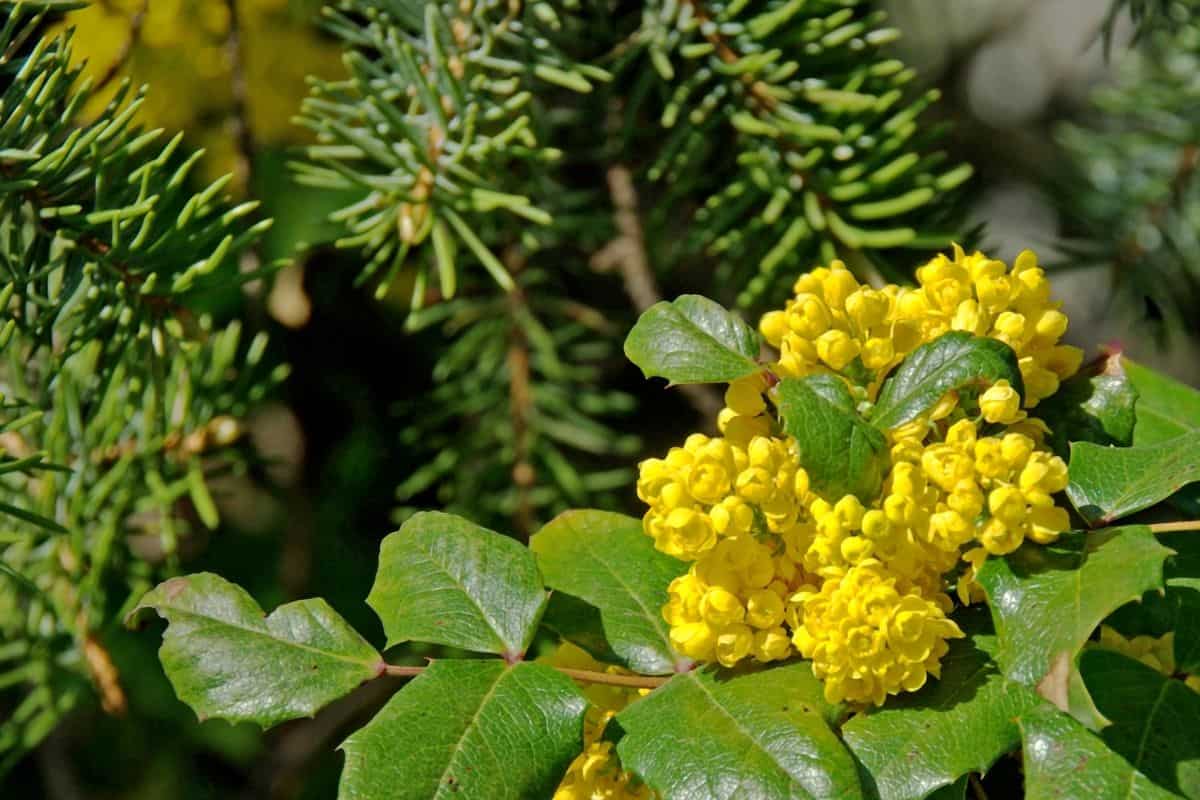
Japanese holly (Ilex crenata) – compact, slow-growing, hardy evergreen shrub with tiny, shiny, rounded leaves and small white flowers followed by black berries
Cascade Oregon grape (Mahonia nervosa) – low-growing evergreen shrub with glossy, toothed, dark-green leaves, canary-yellow spring flowers, and waxy blue berries that resemble small grapes
Sweet box (Sarcococca confusa) – winter-flowering evergreen featuring small, white, fringelike flowers that release a sweet vanilla fragrance and shiny fruits that ripen from red to black
English yew (Taxus baccata ‘Repandens’) – small, spreading, coniferous shrub with undulating branches covered in glossy, dark green needles
Blueberry (Vaccinium spp.) – bushy and often upright with small, oval leaves and sweet, blue berries that are edible as well as ornamental
Rhododendron (Rhododendron spp.) – large, often evergreen, shrub with thick, leathery leaves and showy trusses of flowers
California barberry (Berberis pinnata) – vigorous, easy-to-grow evergreen with lustrous, holly-like foliage, clusters of bright yellow flowers, and edible but sour blue-black berries
Pacific wax myrtle (Morella californica) – dense, bushy evergreen featuring slender, ascending branches clothed in narrow, aromatic leaves and bearing clusters of dark purple berries
Evergreen currant (Ribes viburnifolium) – rambling, low-growing evergreen with tiny maroon flowers in spring and glossy, toothed leaves that smell spicy when crushed
Ferns
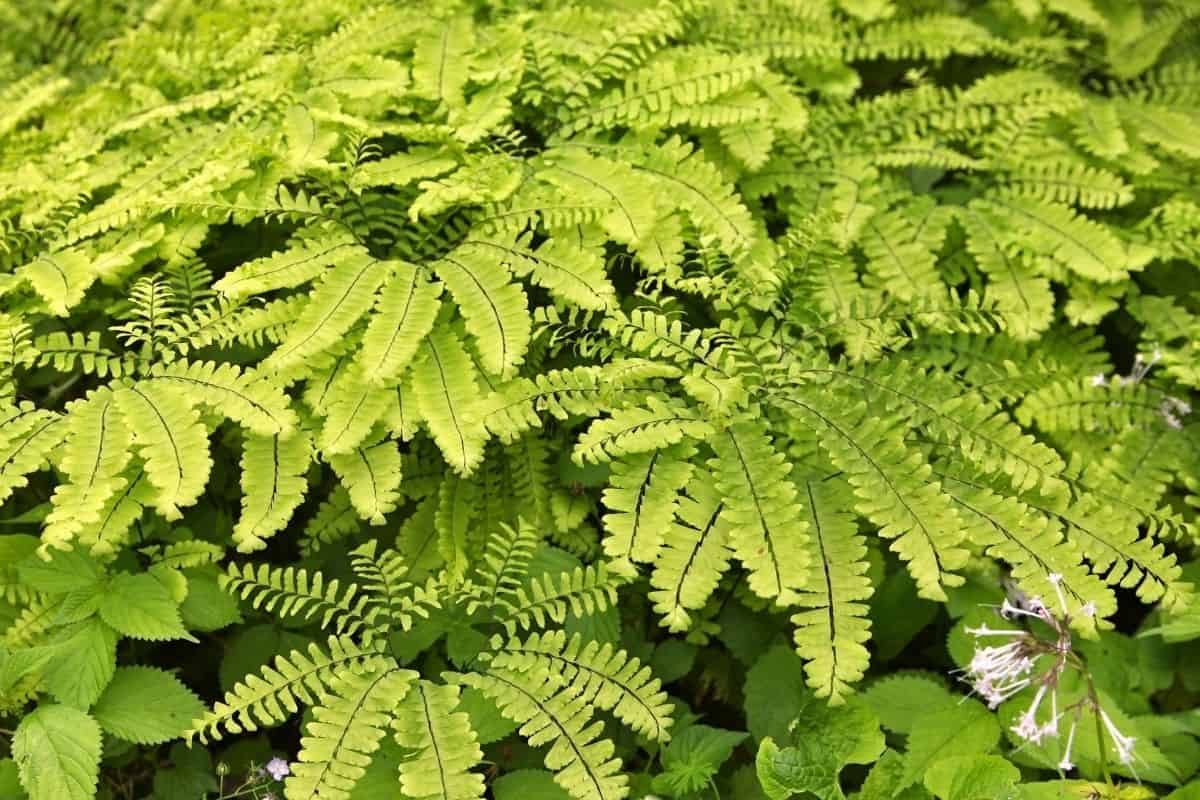
Lady fern (Athyrium filix-femina) – lovely deciduous fern with lacy, bright green fronds arranged in a large upright or arching rosette
Maidenhair fern (Adiantum pedatum) – graceful little deciduous fern featuring a circular pattern of light green fronds with shiny black stems
Christmas fern (Polystichum acrostichoides) – surprisingly drought-tolerant fern featuring dark green, leathery fronds with a clump-forming habit
You no longer have to despair over the ugly bare spot under your beautiful fir tree! With a bit of creativity, respectful care for the tree, and the right plants, you can transform that barren area into a woodland oasis. Now all you need are a pretty bench, a cup of tea, and a good book.
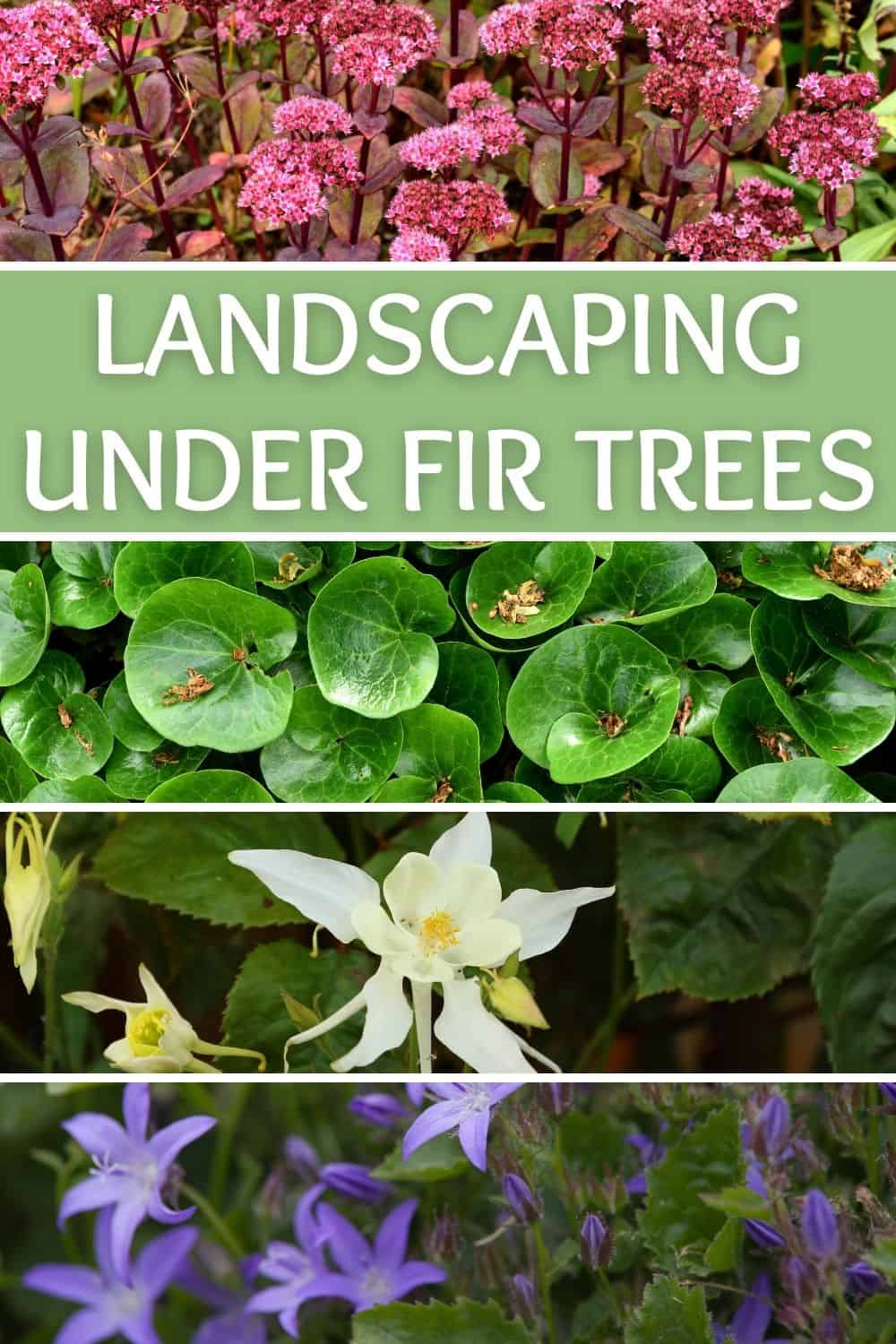

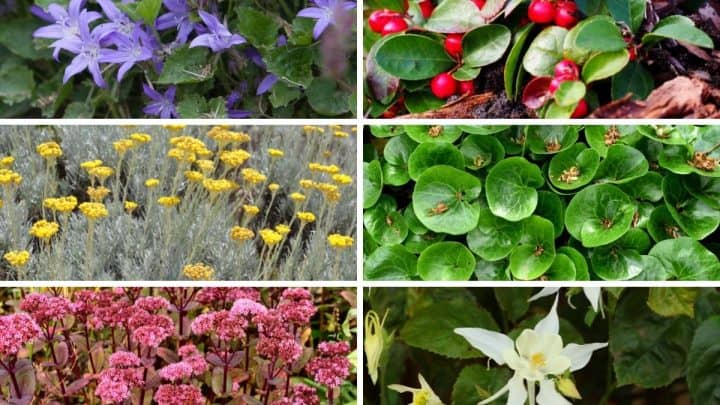



Patricia Fry
Sunday 5th of March 2023
I am looking for a hedge that will grow under fir trees for privacy in zone 8 any ideas?
Adriana
Friday 10th of March 2023
Here are a few you can try: Carolina sapphire cypress, thuja green giant, and wax myrtle.
11 Best Weeping Flowering Trees For Small And Big Gardens Alike (With Pictures)
Tuesday 2nd of August 2022
[…] choose a location with dappled sun or partial shade where it can grow 25 feet (8 meters) tall. Planting your Japanese maple under evergreen trees, like well-established Eastern white pines, is an excellent choice. Pines will give it nearly […]